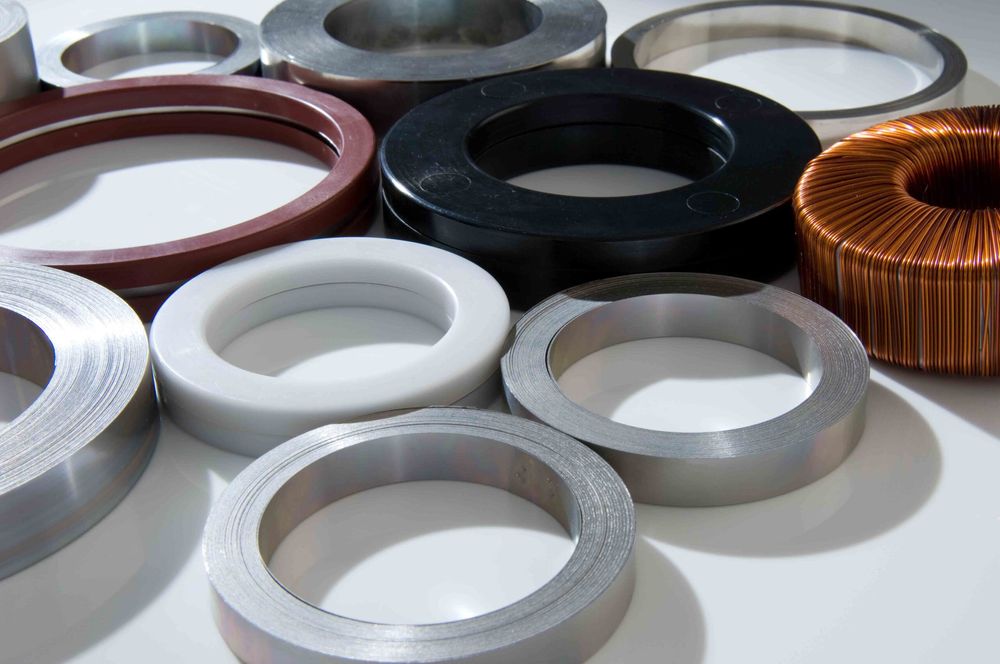
FAQ
Metallurgy & applied physics
Magnetism in few words
Magnetic phenomena are constantly found in nature. The Earth, for example, is one large magnet. Birds use its magnetic field to navigate when migrating. People also use magnetism to get their bearings: the needle of a compass is guided by the Earth’s magnetic field.
What are static and low frequency electric and magnetic fields?
Electric and magnetic fields are force fields. Constant fields (static or stationary) that do not change in time and alternating fields varying with time are distinguished. Slowly varying fields are referred to as "low-frequency fields". Static and low-frequency electric fields emanate from electric charges. They exert forces on other electric charges. Magnetic fields are caused by moving electric charges. They occur e.g. around current-carrying electric conductors. In permanent magnets, electric currents at an atomic level cause the field. Magnetic fields exert forces on magnets, magnetisable material or moving electric charges.
How does magnetic shielding work?
Keyword flux diversion: A magnetic field can have neither a source nor a sink where it begins or ends. Unlike an electric field, no "magnetic insulator" or "protective layer" can be used where the magnetic field lines would reflect or terminate. Instead, the magnetic field is enticed with a highly permeable material to prefer to take the path through the shield. Physically, this can be explained by the fact that the shielding offers the magnetic field an energetically more favorable path. The quality of a good shielding, which represents an alternative for the flow of the magnetic field, is essentially determined by the selection of a suitable material and an optimal geometry. The shielding or the shielding material should be able to carry enough field so that the field lines can be sufficiently drawn into it.
What is behind the term MUMETAL®?
MUMETAL® is a registered trade mark of the company Carpenter Technology, that got registered for the very first time in 1924. The nickel alloy composition has changed over the time and today one of the most common is listed as alloy 2.4545 or 2.4596, especially in Europe. It contains typically 80 % Nickel, 4.5 % Molybdenum and as balance Iron. The alloys are also available under the trade names HyMu 80, Permimphy or Magnifer 7904, depending on the alloy manufacturer. In english it is known as permalloy, today a name that covers more or less all soft magnetic nickel-iron alloys.
What is the best shape for a shield?
The most efficient shape is spherical but this is more difficult to produce and largely impractical in most shielding applications. The next best is a cylinder with closed ends. These end caps significantly increase the shielding attenuation. This is followed by a box shape but the corners need to have a large bend radius to minimise flux leakage. If possible do not use a flat sheet .
Is it possible to use magnetic shielding to isolate magnetic poles?
Magnetic shielding will not isolate or prevent interaction between the north and south poles of a magnet. Materials used for magnetic shielding are high permeability magnetic materials, meaning that the shield offers the path of least resistance for the flow of magnetic flux. As a result, shields are magnetic to a degree, so the shield will instead act to close the field lines to the open end. This means the combination of the shield and the magnet will essentially still act like a normal magnetic dipole with a reduced field range. Shields can also saturate if exposed to strong magnets at close range, therefore providing no shielding effect.
Is it possible to use magnetic shielding and magnets to build a perpetual motion machine?
A perpetual motion machine is a machine that exists in a constant state of motion with no supply of energy. They are forbidden by many fundamental physical laws and can not be created, no matter how complex or ingenious the design. Many attempts at developing perpetual motion machines have focussed on the use of magnets. Magnets can influence the motion of objects at some distance with seemingly no input of external energy. However, the mystic and sometimes counterintuitive properties of magnetics are also governed by the same physical laws that everything else is, including the First and Second Laws of Thermodynamics.
Almost always a magnetic perpetual motion machine consists of some variation of position and geometry of static and moving magnets. There are many examples of purported magnetic perpetual motion machines that can be found easily on the internet. Each one of them can be discredited by looking carefully at the system as a whole. If the starting motion is created with a nudge of the hand or a drop through gravity this is an input of energy which will slowly but surely dissipate. Any perpetual motion machine will grind to a halt with the addition of a load needed to extract work. Both the US and UK Government officially recognise the non-existence of perpetual motion machines by automatically rejecting patent petitions for devices claiming to demonstrate perpetual motion, with the UK patent office stating "articles or processes alleged to operate in a manner clearly contrary to well-established physical laws" are "regarded as not having industrial application".